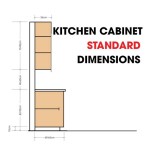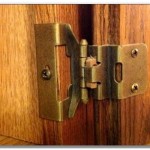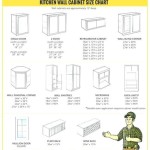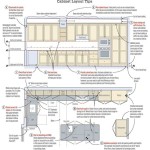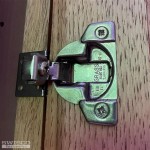What Is The Best Material For Kitchen Cabinet Pulls?
Selecting the optimal material for kitchen cabinet pulls involves a nuanced understanding of aesthetics, durability, functionality, and budget. The ideal choice should complement the overall kitchen design, withstand daily use, resist wear and tear, and align with the homeowner's financial constraints. Understanding the properties of various materials enables informed decision-making when enhancing kitchen aesthetics and functionality.
Defining Durability and Longevity
Durability in kitchen cabinet pulls refers to a material's ability to resist damage from daily use, including scratching, denting, corrosion, and the effects of cleaning agents. Longevity, closely related, is the material's capacity to maintain its structural integrity and aesthetic appeal over an extended period. Several factors influence durability, encompassing the material's inherent hardness, its resistance to oxidation, and the quality of its finish or coating.
Materials like stainless steel and solid brass are renowned for their robustness. Stainless steel provides excellent resistance to corrosion and rust, making it ideal for kitchens where moisture exposure is common. Solid brass is naturally resistant to corrosion and possesses a significant weight, implying structural strength. Conversely, materials like zinc alloys, while often less expensive, might be more susceptible to wear and tear over time, especially in high-use areas.
The choice of finish also significantly impacts durability. A protective coating, such as lacquer or powder coating, can enhance a material's resistance to scratches and corrosion, prolonging its lifespan. Therefore, when evaluating materials for kitchen cabinet pulls, considering both the base material and the finish is crucial for ensuring longevity.
Aesthetic Considerations and Kitchen Style
The aesthetic appeal of kitchen cabinet pulls contributes substantially to the overall design of the kitchen. The material chosen should harmonize with the existing cabinetry, countertops, and other hardware elements. Different materials lend themselves to specific styles, influencing the ambiance of the space.
Stainless steel and chrome finishes typically align well with modern or contemporary kitchen designs. Their sleek, minimalist appearance complements clean lines and minimalist aesthetics. Brushed nickel provides a similar contemporary feel but with a slightly warmer tone, offering a softer alternative to the starkness of chrome.
For more traditional or rustic kitchens, materials like antique brass, oil-rubbed bronze, or wrought iron might be more appropriate. These materials convey a sense of history and craftsmanship, adding character and warmth to the space. Wood pulls, either in natural finishes or painted, can also complement traditional designs, providing a tactile and organic element.
Beyond the material itself, the shape and design of the pulls play a crucial role in the overall aesthetic. Simple bar pulls work well in modern settings, while more ornate knobs or cup pulls are suitable for traditional or farmhouse-style kitchens. The size of the pull should also be proportional to the cabinet door or drawer to maintain visual balance.
Material Options: Properties and Suitability
Numerous materials are employed in the manufacturing of kitchen cabinet pulls, each with unique properties that make them suitable for different applications. Understanding these properties helps homeowners make informed decisions based on their specific needs and preferences.
Stainless Steel
Stainless steel is a popular choice for kitchen cabinet pulls due to its durability, corrosion resistance, and contemporary aesthetic. It is an alloy of iron, chromium, and other elements, providing excellent resistance to rust and staining. Stainless steel pulls are easy to clean and maintain, making them suitable for high-use kitchens.
However, stainless steel can be more expensive than some other materials, and its minimalist appearance may not be suitable for all kitchen styles. It is also susceptible to fingerprints, which may require frequent cleaning to maintain a pristine look.
Brass
Brass is a metal alloy primarily composed of copper and zinc. It is known for its strength, machinability, and resistance to corrosion. Solid brass pulls are typically more durable and heavier than those made from other materials. Brass can be polished to a bright, reflective finish or given an antique patina for a more traditional look.
Brass can be a relatively expensive material, especially solid brass. Over time, untreated brass can develop a patina, which some homeowners find desirable, while others may prefer to maintain its original shine through polishing.
Bronze
Bronze is another copper alloy, usually mixed with tin. It is known for its durability and resistance to corrosion. Bronze pulls often have a rich, warm color that lends itself well to traditional or rustic kitchen designs. Oil-rubbed bronze finishes are particularly popular, providing a textured, antique look.
Bronze pulls can be more costly than some other options. Like brass, bronze can also develop a patina over time, influencing its appearance.
Zinc Alloy
Zinc alloys are commonly used in the manufacturing of kitchen cabinet pulls due to their affordability and versatility. They can be easily cast into various shapes and designs, making them suitable for a wide range of styles. Zinc alloy pulls are typically plated with other metals, such as chrome or nickel, to enhance their appearance and corrosion resistance.
Zinc alloys are generally less durable than stainless steel or solid brass and may be more susceptible to wear and tear over time. The plating can also wear off, revealing the underlying metal. The quality of the alloy and the plating process significantly influence the pull's longevity.
Ceramic and Porcelain
Ceramic and porcelain pulls offer a unique aesthetic appeal, often featuring intricate designs and vibrant colors. They are typically used as decorative accents and can add a touch of personality to kitchen cabinets. Ceramic and porcelain are durable materials that resist scratching and fading.
These materials can be more fragile than metal options and may be prone to chipping or cracking if subjected to impact. They may also be more difficult to clean than metal pulls, particularly if they have textured surfaces.
Wood
Wood pulls provide a warm, natural aesthetic that complements traditional or farmhouse-style kitchens. They can be made from various types of wood, such as maple, oak, or walnut, and can be stained or painted to match the cabinetry. Wood pulls offer a tactile and organic element that can enhance the overall design of the space.
Wood pulls are generally less durable than metal pulls and may be susceptible to moisture damage or warping. They require regular maintenance, such as cleaning and sealing, to prevent damage and maintain their appearance. The quality of the wood and the finish significantly influence their longevity.
Acrylic and Glass
Acrylic and glass pulls offer a modern, minimalist aesthetic that complements contemporary kitchen designs. They are available in various colors and shapes, allowing for customization and personalization. Acrylic pulls are lightweight and durable, while glass pulls offer a sophisticated, elegant look.
Acrylic pulls can be susceptible to scratching, while glass pulls can be fragile and prone to breaking if subjected to impact. Both materials may require frequent cleaning to maintain a pristine appearance.
Budget Considerations and Cost-Effectiveness
The cost of kitchen cabinet pulls can vary significantly depending on the material, design, and manufacturer. Budget considerations are essential when selecting pulls, balancing the desired aesthetic and durability with financial constraints. Cost-effectiveness involves evaluating the long-term value of the pulls, considering their lifespan and maintenance requirements.
Zinc alloy pulls are generally the most affordable option, making them suitable for budget-conscious homeowners. Stainless steel pulls offer a balance of durability and affordability, making them a popular choice for many kitchens. Solid brass and bronze pulls are typically more expensive, reflecting their higher material costs and superior durability.
Ceramic, porcelain, wood, acrylic, and glass pulls can range in price depending on their design and quality. Intricately designed or handcrafted pulls may be more expensive than mass-produced options. When evaluating cost-effectiveness, considering the long-term durability and maintenance requirements of the pulls is crucial. Higher-quality pulls may require less frequent replacement and maintenance, ultimately saving money over time.

5 Tips On Choosing The Right Kitchen Cabinet Hardware
:max_bytes(150000):strip_icc()/easy-steps-to-install-cabinet-hardware-1822225-07-0a31994a76dd450ba41b2ba2ba6e3d59.jpg?strip=all)
How To Select Cabinet Knobs And Pulls
Cabinet Hardware Guide Signature

Best Kitchen Cabinet Hardware 2024

What To Look For When Kitchen Cabinet Hardware Toulmin Bath Custom Cabinets Kitchens And Bathroom Design Remodeling In Tuscaloosa Birmingham Alabama

Best Kitchen Cabinet Hardware 2024
Cabinet Hardware Guide Signature

How To Choose Cabinet Hardware Match Kitchen Decor

Cabinet Hardware Placement Guide

Best Materials For Kitchen Cabinets Types And Uses Granite Countertops Pompano Beach Fl
Related Posts

